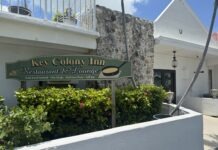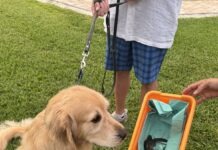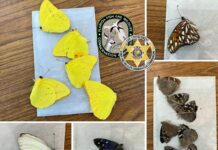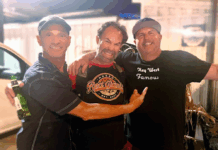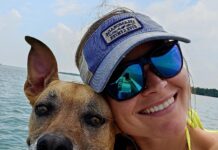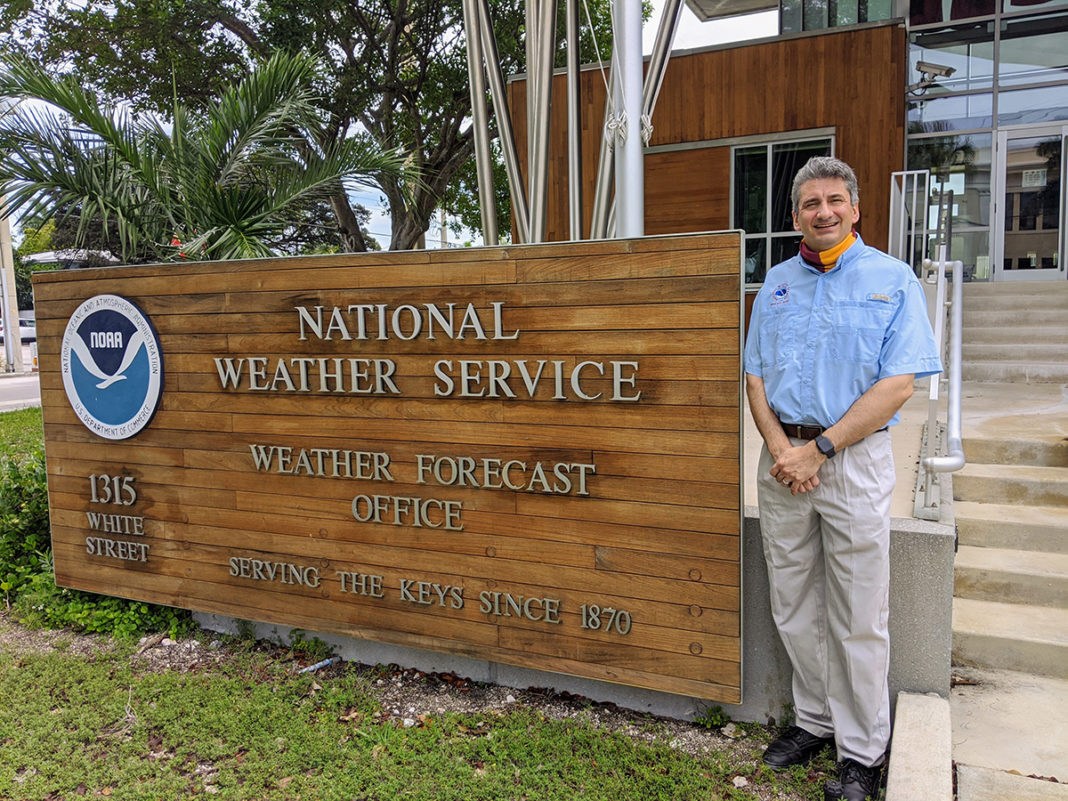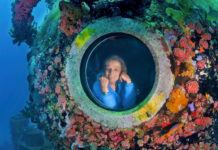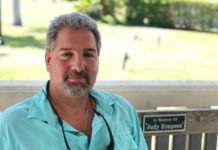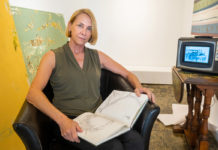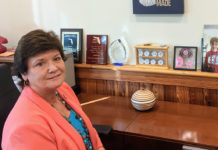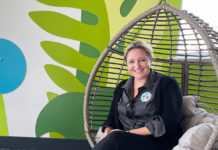Typically associated with frozen drinks and alluring islands, the term “tropical” acquires a sobering significance every summer, when it often precedes more worrisome words like weather, depression, storm and cyclone. That tropical weather — and the hurricanes it spawns — brought Maryland-born meteorologist Jon Rizzo to the Florida Keys in 1999. Rizzo wasn’t drawn to winter weather warnings or Midwest tornadoes. “I was always more interested in tropical weather,” Rizzo told the Keys Weekly at the start of the 2020 hurricane season.
As the warning coordination meteorologist for the National Weather Service’s Key West forecast office, Rizzo recalled his most memorable hurricane moments, reviewed a misconception about the all-too-familiar “forecast cone” and revealed his most essential hurricane supply.
The Weekly: What was your first hurricane as a meteorologist in Key West?
Rizzo: My very first was Hurricane Irene in 1999. Back then, our office was still located at Key West International Airport. I remember, although the storm didn’t do tremendous damage to the Keys, the waves and sand still came pouring over the seawall and made South Roosevelt Boulevard impassable. My first devastating storm was Hurricane Wilma in October 2005.
The Weekly: As the warning coordination meteorologist, what’s your primary focus before, during and after a hurricane? How does that compare to what the National Hurricane Center does?
Rizzo: The National Hurricane Center in Miami handles the big picture: size and strength of the storm, and statewide warnings and advisories for emergency management officials in Tallahassee. At this office, we focus on the potential impacts for our local service area — Ocean Reef to the Dry Tortugas. We focus on potential storm surge, wind speeds and timing. And then after a storm, we focus heavily on daily weather forecasts, because during recovery, little things — like trying to land a helicopter filled with supplies — become very significant.
The Weekly: What do you wish people more clearly understood about hurricanes and/or forecasting?
Rizzo: “The cone” doesn’t show the area of impact. It conveys where the center of the storm could be. As we know, hurricane- and tropical storm-force winds certainly can extend for several miles beyond the center of the storm. Instead of looking at the cone, people need to look at hurricane warnings and storm surge potential and they need to listen to local officials.
The Weekly: What are your two most memorable hurricane moments?
Rizzo: My first is Hurricane Wilma. That was my first big storm and it was the first time in decades that Key West had seen that level of storm surge. I’ll never forget the devastation of seeing people’s entire lives and all their soaked belongings piled up on the curb. My second most memorable moment occurred during Hurricane Irma, when I was embedded with the county’s emergency operations center. We started in the Marathon Government Center and then when things started looking bad for Marathon, we had to move the EOC up to Ocean Reef.
The Weekly: You’re the expert and a storm-seasoned veteran. What’s your most essential hurricane supply?
Rizzo: A lithium-ion backup battery for cell phones and other devices. Although things have improved since 2005, with all the USB charging capabilities, I still always keep at least two of those backup batteries fully charged as a storm approaches.




